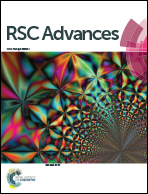The role of silver nanoparticles functionalized on TiO2 for photocatalytic disinfection of harmful algae
Abstract
Silver loaded TiO2 samples were prepared by photodeposition of different amounts of Ag+ ions over commercial titanium dioxide (Evonik TiO2 P25) in aqueous media without the presence of sacrificial agents. The obtained photocatalysts were characterized by several techniques such as X-ray powder diffraction (XRD), UV-vis diffuse reflectance spectroscopy (DRS), transmission electron microscopy (TEM) and X-ray photoelectron spectroscopy (XPS) in order to correlate the effect of the silver amount on the photocatalytic properties of the final nanocomposite. The effect of the silver nanoparticles on the photocatalytic behaviour of TiO2 was evaluated by means of the photodegradation of methyl orange dye and the inactivation of noxious algae Tetraselmis suecica and Amphidium carterae under continuous exposure of low power irradiation UV-light. The sample with 1.5% wt of silver nanoparticles showed the highest photocatalytic elimination of the azo dye and both algae types. According to the results, the cells were deformed during the photocatalytic process by the attack of highly reactive species such as hydroxyl radicals, H2O2 and superoxide ions generated on the TiO2 surface. The algae cells were not regenerated by themselves after the photocatalytic process due the high degree of fragmentation that they suffered during the light irradiation.


 Please wait while we load your content...
Please wait while we load your content...